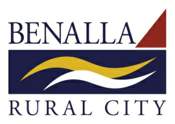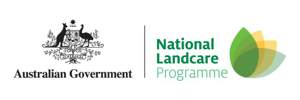Cabomba (Cabomba caroliniana) is a Weed of National Significance (WONS) and regarded as one of the most invasive aquatic weeds in Australia because of its ability to spread, and it's economic and environmental impact on rivers, reservoirs and water users.
C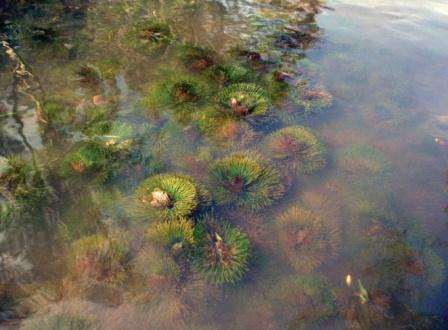 abomba can spread rapidly through waterways and lakes as fragments easily break from the parent plant and are capable of re-establishing. Cabomba has been a problem in Lake Benalla and downstream of the Lake in the Broken River to Casey's Weir and the Broken Creek for some years.
abomba can spread rapidly through waterways and lakes as fragments easily break from the parent plant and are capable of re-establishing. Cabomba has been a problem in Lake Benalla and downstream of the Lake in the Broken River to Casey's Weir and the Broken Creek for some years.
Cabomba produces a large amount of submerged plant material and can significantly reduce the capacity of water storages, taint drinking water and block pumps.
Its dense mass of underwater stems and leaves restricts recreational use and cause hazards for recreational water users and swimmers.
In permanent water, it is an extremely persistent plant and chokes native vegetation within the water body and restricts light penetration to the water column leading to changes in the food chain. When the Cabomba vegetation dies off, decomposition causes dramatic oxygen reductions which can kill fish and other aquatic fauna.
Weeds of National Significance
The inaugural list of Weeds of National Significance (WoNS) was announced jointly by Commonwealth Ministers in June, 1999.
http://www.weeds.org.au/WoNS/
Since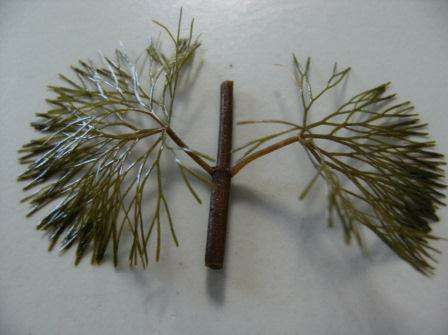 that date much work has been undertaken in managing the 20 key species.
that date much work has been undertaken in managing the 20 key species.
The methodology for determining Weeds of National Significance comprised of the following four major criteria:
- Invasiveness
- Impacts
- Potential for Spread
- Socio-economic and Environmental Values
The following link allows you to view information about Cabomba
http://www.weeds.org.au/WoNS/cabomba/
Origins
Cabomba originated in South America and was introduced to Australia as an ornamental plant for aquariums. It has been introduced to waterways through the emptying of fish tanks into streams, and illegal planting of Cabomba in waterways for growth and harvesting for sale.
Lake Benalla
Established in 1974 when a wall was constructed on the Broken River near the railway line, Lake Benalla is now an important asset to Benalla, providing a pleasant and relaxing environment, stimulating tourism, and providing important habitat for flora and fauna (including rakali (aka water rat) and platypus). In recent years the Lake has become degraded and infested with Cabomba.
Cabomba was first recorded in the Broken River in 1990, and various control measures have been attempted since the mid-1990’s with varying success. Left uncontrolled, Cabomba has the potential to disperse into lower reaches of the Broken River, Broken Creek and eventually Barmah, a Ramsar Wetland of international significance.
There have been a number of control methods trialled on Cabomba, both in Lake Benalla and around Australia, including water level drawdowns, shading, benthic barriers (curtains), manual removal and dredging. Currently there are no herbicide and biological control registered for Cabomba management in non-agricultural situations. Recent experience has shown that drawdown to dry-out the lake bed is currently the most feasible control method currently available (weather permitting). A drawdown prior to the floods of 2010 appears to have successfully eliminated Cabomba from Lake Benalla, having not been sighted since then. Drawdowns at Casey’s Weir have not been as successful, with wet weather thwarting such attempts.
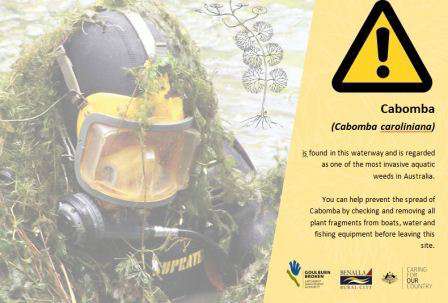 How can you help
How can you help
The community can support the management of Cabomba by preventing its impact on the region's waterways and aquatic environment.
Check and clean all equipment to do your bit and prevent the spread of Cabomba.
We all need to work together to prevent its spread. You can protect your favourite river, creek or wetland. Make sure all boats and fishing equipment are checked for plant fragments and be cleared of Cabomba fragments before leaving the site. Also dispose of unwanted fishtank material (both plants and animals) appropriately. Do not through them into a waterway or dunp in drains and channels. PROTECT OUR WATERWAYS AND KEEP THEM CLEAR OF UNWANTED PEST PLANT AND ANIMALS.
Project Partners
